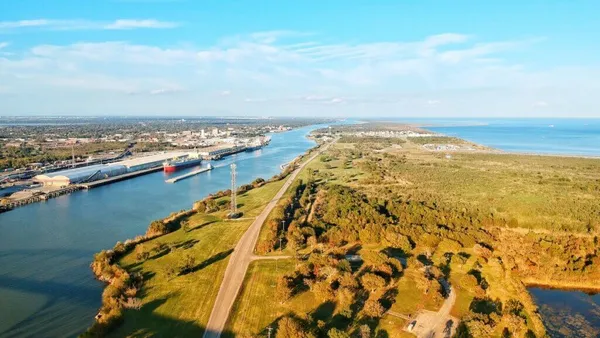Dive Brief:
- A research team from Washington University installed a first-of-its-kind infrastructure sensor array Sept. 21 on North America’s longest suspension bridge to test the ability of sensor technology to self-monitor and report on the integrity of large-scale infrastructure projects.
- The project involving Michigan’s Mackinac Bridge includes thousands of self-powering sensors imbedded into concrete and other structural materials to communicate data on stress, strain and structural failure to a cloud command center for analysis.
- Data will be used to make infrastructure more resilient in the event of earthquake or critical climate events and to help design, construction and operational managers identify systemic trends and opportunities to improve existing projects.
Dive Insight:
Infrastructure's IoT moment has come. While a wide range of construction and building systems have reached an Internet of Things level of connectivity, this unique pilot is the first step toward making large-scale infrastructure "smart" in and of itself — reporting integrity and resiliency data to site managers but also reaching a level of self-monitoring to predict system failures in the event of major climate or even terrorist events. The team also hopes the data gathered helps emergency responders best prioritize efforts when critical events occur.
In the wake of 911, Hurricane Katrina, Super Storm Sandy, and other disasters, attention on infrastructure resiliency has been top of mind for infrastructure professionals. In 2014, a coalition of 19 industry groups aligned to boost the awareness of resilience planning and overall improvement in building materials.
The fact that the industry could reach the point where thousands of low-cost resiliency sensors are imbedded into those materials for big data collection is proof positive of traction in the resiliency market for the built environment. In fact, an analysis by MarketsandMarkets in June 2016 pegged the infrastructure resiliency market to hit $145 billion by 2021.














